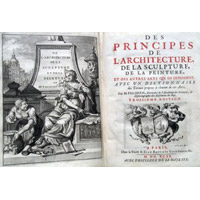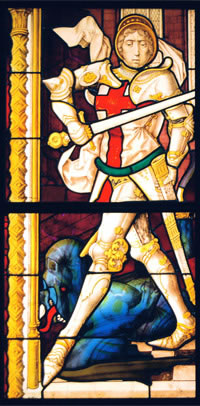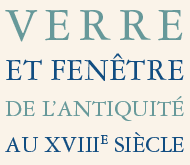The Master Piece
Guilds were organisations of craftsmen possessing a city-wide monopoly on the production of certain commodities. However, they invariably had to contend with competitors in other locations, often out in the countryside. Either the competing products were imported into the city or they were sold on the same regional or international markets as the items produced by the urban craftsmen. As producers in large towns usually faced higher costs (wages, taxes, housing, etc.) than rural producers or producers in smaller towns, they were unable to compete through pricing and often chose to provide better quality goods instead7. This preoccupation with product quality explains not only why norms and standards were prescribed, but also the system of apprenticeships and a master’s test.
In many cases, a compulsory apprenticeship had already been prescribed by the late Middle Ages, but the earliest references to a master’s test usually date back to the late 15th century. Generally speaking, they were introduced during what historians refer to as the “long sixteenth century”. Precisely why they were introduced is still open to study, but it would appear that initially efforts were made to adapt the skills acquired during the apprenticeship period to the product market. In the case of Antwerp’s guild of cabinetmakers, for example, a test was introduced in 1497 that encompassed the production of three pieces of furniture, i.e. two different cabinets and a table, adapted to the rather broad standardisation that existed within the sector at that time8. As far as the table was concerned, the dean of the guild could choose between a circular-shaped ‘disch’ and a square table9, while the shape of the cabinet was strictly prescribed. This choice probably depended on the workshop where the apprentice had learnt the craft and the pieces that were generally produced there.
The oldest documents (Ghent, 1600)10 found in the sector under study would appear to suggest that matters were similar in the stained-glass and glaziers’ crafts. Three possible master’s tests could be imposed: ‘the production of a glass lantern’ or an ‘oval roundel with helm, coat of arms, and mantling’ (see fig. 1) or a stained-glass panel with a diced leading pattern (‘eenen teerlinck pandt’) (see fig. 2). These three tests would appear to coincide with three distinct disciplines within the craft, namely lantern making, stained-glass making, and glazing.
There are indications that, at a later stage, the direct relationship between the test and the product market was lost. In the case of the aforementioned carpenters, for example, just one cabinet would eventually be prescribed, and for ebony cutters, who were added to the carpenters’ guild in 1621, the test consisted exclusively in the making of a ‘crucifix’11. It would thus appear that, as a result of the increasing complexity of the items made and the growing degree of specialisation within and among workshops, only the basic skills were now tested. In the case of the stained-glass artists and glaziers, we observe that the master’s test gradually evolved towards a standardised test in which glass cutting and leading were of central importance.
In a text from Lier (1619-1620)12, we read that the local master’s test was based on the same criteria as those applied in Antwerp. However, the earliest details about the Master’s test in Antwerp are found in a text dating from 166013. It involved a lead pattern with ‘six right angles’ and a piece of blue ‘holed’ (‘gegaet’) glass. Presumably, the composition represented the coat of arms of the St Luke’s Guild, as this was also the assignment in Aalst in 170014. Moreover, it is commonly found on the early 18th century pattern sheets for lead compositions in two pattern books that are preserved at the Steinmetz Cabinet in Bruges15 (see fig.3). Many models involve compositions with ‘angle bars’ (see fig. 4).
In Aalst (1700), the text was clear. It details that the coat of arms of the St Luke’s Guild should be produced from a piece of (blue?) glass in which three small arms (white glass?) should be cut out without breaking the surrounding larger piece of glass.
The skill of cutting or nibbling of one or several holes in a larger piece of glass had probably been one of the essential assignments in the master’s test for some time. Certainly in the case of two late 15th century stained-glass windows depicting St. Michael and St. George, which probably used to adorn the chapel of the St Luke’s Guild in Bruges16, we notice that this ‘art of glass-cutting’ was applied several times in virtuoso fashion (see figures 5-6-7-8).
In an ordinance from Lier dating from 173617, it is again mentioned that the criteria for the master’s test are the same as those laid down in Antwerp.
In 175218, the Brussels guild prescribes three mandatory steps for obtaining the title of Master. Each step had to be assessed. The first phase involved the drawing of ‘the usual model’ over 2.5 square feet. In this drawing, the motif to be applied was a pattern conserved by the guild (‘den patroon ter Tresorije’). At the City Museum of Louvain, we encounter references to a comparable master’s test, probably dating from around 179019. (see fig. 9) The lead composition of this stained-glass window is again also found in the pattern books in Bruges20. (see fig. 10) This time, the coat of arms of the City of Louvain is the central element.
On the basis of a dispute in Malines in 178221 regarding the execution of the Master’s test in blank glass, with blue glass for the central decorative element (‘loof ofte cieraerd’) as was the ‘tradition’, we conclude that the local guild stuck to the requirement of applying a decorative, coloured central element. The text also reveals that coloured (blue) glass was scarce and/or expensive around that time.
Not much later, in 178422, also in Malines, no explicit reference is made to the requirement of a decorative element, as the test now apparently only consisted in the production of a square window measuring two by two feet and with the required lead pattern (‘sijn deceins’). Presumably the latter refers to the lead composition rather than to a central decorative element.
In order to understand these evolutions, three aspects are crucially important. First, the glass-staining test was scrapped from the regulations. This would appear to indicate that the production of quality non-stained glass windows was becoming increasingly important. Indeed, this assumption is confirmed by the previously observed trend by art historians that fewer and fewer monumental stained-glass windows were being made as the 17th century wore on. Demand for non-stained glass windows – not only in churches but also in private homes – increased. Second, this sheds light on certain institutional evolutions. After all, the question arises how the guilds as organisations responded to the changing market situation and the resulting shifts in the balance of power between glaziers and stained-glass artists. Certainly in the documents studied, we find increasingly fewer references to stained-glass window production. Third, this evolution did not unfold independently from what happened in other crafts, where the standardised master’s test had essentially become a key skills test. We found no indications of specialisation within and between workshops.
- 7. Van Der Wee H., 1975, ‘Structural Changes and Specialization in the Industry of the Southern Netherlands’, Economic History Review, 28, p. 203-221; Van Der Wee H., ‘Industrial Dynamics and the Process of Urbanization and De-Urbanization in the Low Countries from the Late Middle Ages to the Eighteenth Century’, in: Van Der Wee H. (ed.), 1988, The Rise and Decline of Urban Industries in Italy and the Low Countries (Late Middle Ages - Early Modern Times), Leuven, p. 307-381; Lis C. and Soly H., ‘Different Paths of Development: Capitalism in the Northern and Southern Netherlands During the Late Middle Ages and the Early Modern Period’, Review, 20 (1997), p. 228-238; Lis C. and Soly H., 2000, ‘Exportgewerbe, Zünfte und kapitalistische Entwicklungen in den Nördlichen und Südlichen Niederlanden im späten Mittelalter und der Frühen Neuzeit’, in: W. Reininghaus (ed.), Zunftlandschaften in Deutschland und den Niederlanden im Vergleich, Westfalen-Lippe, p. 45-70. ↑
- 8. ‘een spenne, een tritsoer ende eenen rondeel disch oft viercante tafel’, City Archives Antwerp (CAA), Guilds and Crafts (GC) 4334, Ordinance of 14 June 1497, art. 2, f° 1v°; GC 4335, f° 1 (copy). ↑
- 9. ‘daer voere welck de dekens lieffst hebben sullen’, CAA, GC 4334, Ordinance of 14 June 1497, f° 1v°, art. 2; GC 4335, f° 1r° (copy). ↑
- 10. City Archives Ghent (CAG), Ordinance of 18 October 1600, Memberbook of 1338-1733, f° 51 v°. ↑
- 11. Cf. De Munck B., ‘Construction and reproduction. The training and skills of Antwerp cabinetmakers in the 16th and 17th centuries’, in: De Munck B., Kaplan S. and Soly H. (eds.), Learning on the Shop Floor. Historical Essays on Apprenticeship (in print). ↑
- 12. City Archives Lier (CAL), Request of painters and cabinet makers, 1619-1620, f° 2r°. ↑
- 13. CAA, Statement on the master piece of Marc Martens, 4 March 1660, f° 1r° and f° 1v°. ↑
- 14. CAA, Book of Bills of 1700, f° 8v°. ↑
- 15. Steinmetzkabinet (Bruges), inv. no. 0.3110? f° 68 and f° 60. ↑
- 16. Bruggemuseum (Bruges, Museum Gruuthuse) inv. nos. 0.81.XXII a-b. ↑
- 17. CAL, Letters of the Corporation (17th century -1736), 1736, f°184 r°. ↑
- 18. State Archives Brussels (SAB), Ordinance of 1752, Book of Privileges (1647-1794), f° 135r° and f° 135v°. ↑
- 19. City Archives Louvain, inv.no. B/III/75, Master piece of Jean-François Bosmans, about 1790. ↑
- 20. Steinmetzkabinet, inv. no. 0.3110-f.8. ↑
- 21. City Archives Mechelen (CAM), Dispute of 13 May 1782, Roll of the Masons- and Glaziers guild, f° 41r° and f° 41v°. ↑
- 22. CAM, Enquiry of 30 September 1784, f° 3r° ↑












